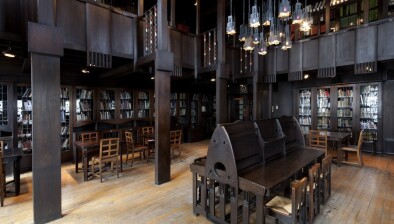Part of damages claim arising from Glasgow Art School fire dismissed

Image copyright SFRS
A lord ordinary has dismissed part of an action raised by the tenant of a building located next door to the fire-damaged Glasgow School of Art insofar as it related to assignees of the tenant but allowed the tenant’s part of the action to continue.
Tecjet Ltd, part of a group of companies owned by US company Live National Entertainment Inc, sued Kier Construction Ltd, the principal contractor at the site, for loss and damages arising from the fire. It also sued as an assignee of claims by two other companies in the same group that operated from the premises. The defender contended that any claim against it by the tenant had prescribed, while the purported assignations did not convey such rights as to allow the raising of an action on the assignees’ behalf.
The case was heard by Lord Richardson in the Outer House of the Court of Session. Smith KC and Black, advocate, appeared for the pursuer and MacColl KC and Steel, advocate, for the first defender.
Relevant claim
In June 2018, the pursuer was the tenant of premises known as the O2 Building at 300 Sauchiehall Street, Glasgow, which it operated as a nightclub and music venue. Two other companies, Academy Music Group Ltd and Live Nation (Music) UK Ltd also operated from the premises. At the time, the defender was the principal contractor at the site of the Art School, tasked with carrying out remedial work following an earlier fire in 2014.
On 15 June 2018, fire again broke out at the School of Art site. The fire caused extensive damage and spread to adjoining buildings including the pursuer’s premises. The pursuer contended that the occurrence and spread of the fire when the defender was in sole control of the site was evidence of the defender’s negligence, and thus the maxim res ipsa loquitur applied.
It was argued by the defender that when the summons was served in May 2023 the pursuer had failed to set out the nature or basis of its right to claim damages. It was not until September 2023 that the pursuer introduced averments relating to its lease of the premises, by which point the claim had prescribed. The summons as served did not relevantly set out the basis of the pursuer’s title and so did not constitute a “relevant claim” for the purposes of section 6(1) of the Prescription and Limitation (Scotland) Act 1973.
In relation to the claims raised on behalf of the assignees, it was submitted that, properly construed, the purported assignations did not convey any property rights to the pursuer. The wording amounted to no more than a mandate to the pursuer to pursue the litigation against the defender. In the case of the second assignation, it was dated 14 June 2023, when the summons had passed the signet on 4 May 2023. As such, it could not cure any defect in the pursuer’s title in respect of the assignors’ claim.
In the name of the pursuer
In his decision, Lord Richardson said of the pursuer’s claim as originally set out: “Section 9(4) [of the 1973 Act] defined ‘appropriate proceedings’, by reference to section 4 of the Act, as ‘any proceedings in a court of competent jurisdiction in Scotland or elsewhere, except proceedings in the Court of Session initiated by a summons which is not subsequently called’. In light of the definition contained in section 9(1), it is apparent that the ‘relevance’ of a claim is to be determined by reference to the obligation in respect of which it is made rather than by reference to the legal relevance of the averments used to frame it.”
He continued: “The main thrust of the criticism of the summons made by the defender was that the lease itself had not been incorporated into the pleadings and that, when the terms of the lease were considered, it appeared that the assignors were not, in fact, tenants. These points are very far from rendering the summons either ‘fundamentally null’ or ‘incurably incompetent’.”
Turning to the status of the assignations, Lord Richardson said: “The pursuer had been assigned the right to bring proceedings and conduct those proceedings on behalf of the assignors. However, the present proceedings were raised only in the name of the pursuer. It also follows that, as in Bentley v Macfarlane (1964), the present proceedings were a nullity so far as the assignors’ claims are concerned and nothing that was done subsequently could cure that fundamental defect.”
However, he concluded: “As a matter of averment, the pursuer’s case is relatively straightforward. As the tenant of premises adjacent to the site which, according to the pursuer, was controlled by the defender, the pursuer has averred a basis upon which, if proved, it could establish that the pursuer was owed a duty of care by the defender to avoid causing damage to the pursuer’s property by fire. I tend to agree with the submission made on behalf of the pursuer that the existence of a duty of care in these circumstances would seem neither novel nor controversial.”
Accordingly, Lord Richardson dismissed the action insofar as it related to the losses of the assignors, and put the case out by order to enable the parties to make addresses on further procedure.
















